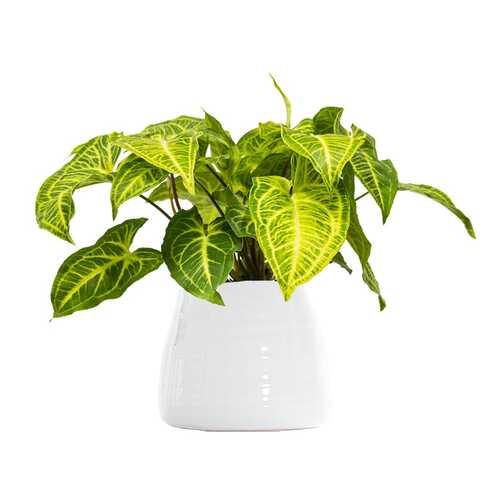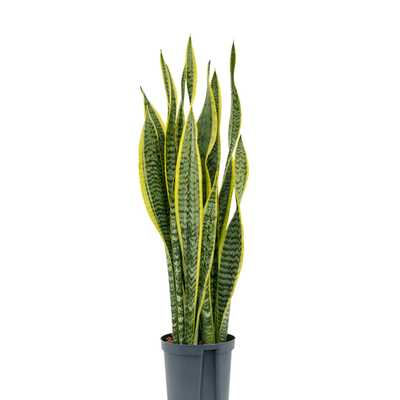Call US : 989124548005
Banana
0 USD
Short Description:
If you don't have the fortune of residing in a warm region suitable for cultivating tropical plants outdoors, why not consider growing an indoor dwarf Cavendish banana as an alternative?Cavendish
Overall features of Dwarf Cavendish Banana
If you don't have the fortune of residing in a warm region suitable for cultivating tropical plants outdoors, why not consider growing an indoor dwarf Cavendish banana as an alternative?
The plant has gained popularity among houseplant enthusiasts due to its stunning broad leaves. The plant possesses sizable paddle-shaped leaves that grow in a symmetrical manner, lending it an exotic aesthetic. In its early stages, young plants may exhibit maroon-purple patterns on their foliage. Once fully developed, this plant has the capability to yield miniature edible bananas.
Growing a banana plant indoors not only adds aesthetic appeal to your home but also offers practical benefits. The broad leaves of bananas are commonly used in Asian and African cuisines for cooking and wrapping food.
The apartment variety typically grows between 2.30 and 3 meters in height. An advantageous aspect of growing the Dwarf Cavendish banana plant indoors is its non-toxic nature, ensuring the safety of households with pets or children.
With proper care, it grows quickly and is an excellent choice for home.
So, here’s a helpful manual to look after your plant and let it flourish happily.
Origin
The plant is native to Southeast Asia and thrives in tropical or subtropical climates without cold winters. It belongs to Musaceae family.
Light Requirements:
Dwarf Cavendish Banana requires ample indirect light, as low light conditions are unsuitable. However, direct and intense sunlight can lead to leaf burn and browning. Consider using plant growing lamps to supplement light if necessary.
It can tolerate both full sun and partial shade. It's important to keep the plant away from drafty areas, and if placed outside during warmer months, it should be sheltered from strong winds or heat to prevent damage to its delicate leaves.
Try to position the plant near a window that receives bright indirect sunlight. A south-facing window is particularly beneficial as it provides access to ample sunlight.
Extended exposure to direct and intense sunlight can cause the large leaves to fold.
Watering:
Due to its large leaves, Dwarf Cavendish Banana requires regular watering, especially in hot weather.
It appreciates generous watering, and it's recommended to water when the top layer of soil becomes slightly dry.
Ensure that water drains from the pot's drainage holes, and discard any excess water collected in the saucer to prevent root rot. Overwatering can result in yellowing leaves. In hot seasons, maintain moist soil, but reduce watering during colder seasons.
Proper soil:
It is advisable to use light soils like cocopeat and perlite. If using houseplant soil, incorporate perlite to enhance soil drainage.
Ensure that the soil doesn't completely dry out. Good drainage is crucial, particularly in hot regions. Applying a layer of mulch can help retain moisture and protect the shallow roots.
The ideal soil pH range for optimal growth is between 5.5 and 7.
To support plant growth, you can apply a balanced fertilizer. For young plants, use a 12-2-6 NPK fertilizer or a similar formula containing 2-3% magnesium every two months until they begin producing fruits.
Humidity and temperature:
The plant prefers warm conditions ranging from 64 to 80 degrees Fahrenheit. However, it can tolerate temperatures as low as 10 degrees Celsius during winter.
If the plant has been kept outdoors on a balcony or terrace, it should be brought indoors when temperatures drop since it is not frost-friendly.
Brief overview:
Botanical name: Musa acuminata 'Dwarf Cavendish
Family: Musaceae
Plant’s classification: Ornamental houseplant
Requirements: ample indirect light, warm conditions, pH 5.5 to 7, well-drained soil
| Height : | 35cm, 60cm |
| Pot (Liter) : | 4, 7 |
Product Reviews
Similar Products
List of similar products that you can see

Yucca’s
0 USD

Yocca
0 USD

Zamioculcas Zamiifolia
0 USD

Syngonium’s
0 USD

Spathiphyllum
0 USD

Schefflera
0 USD

sansevieria
0 USD

Pothos Silver Splash
0 USD

Pothos adanson
0 USD


.jpg)
.jpg)
.jpg)
